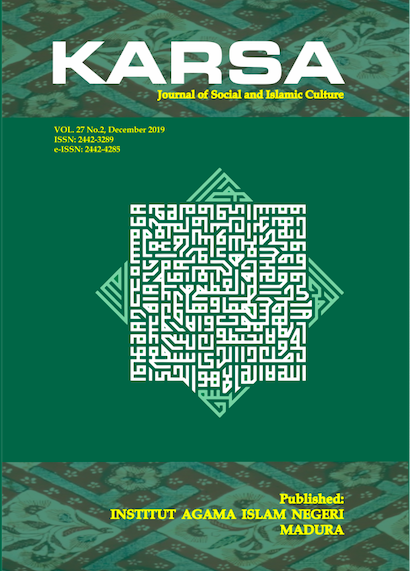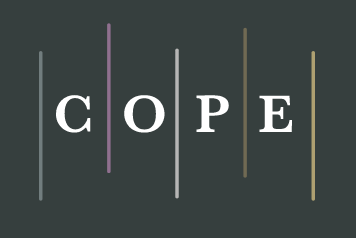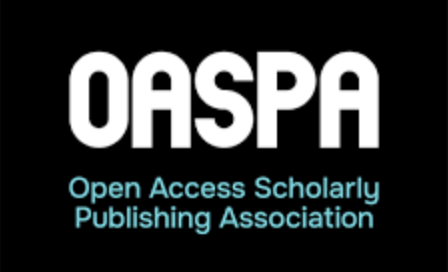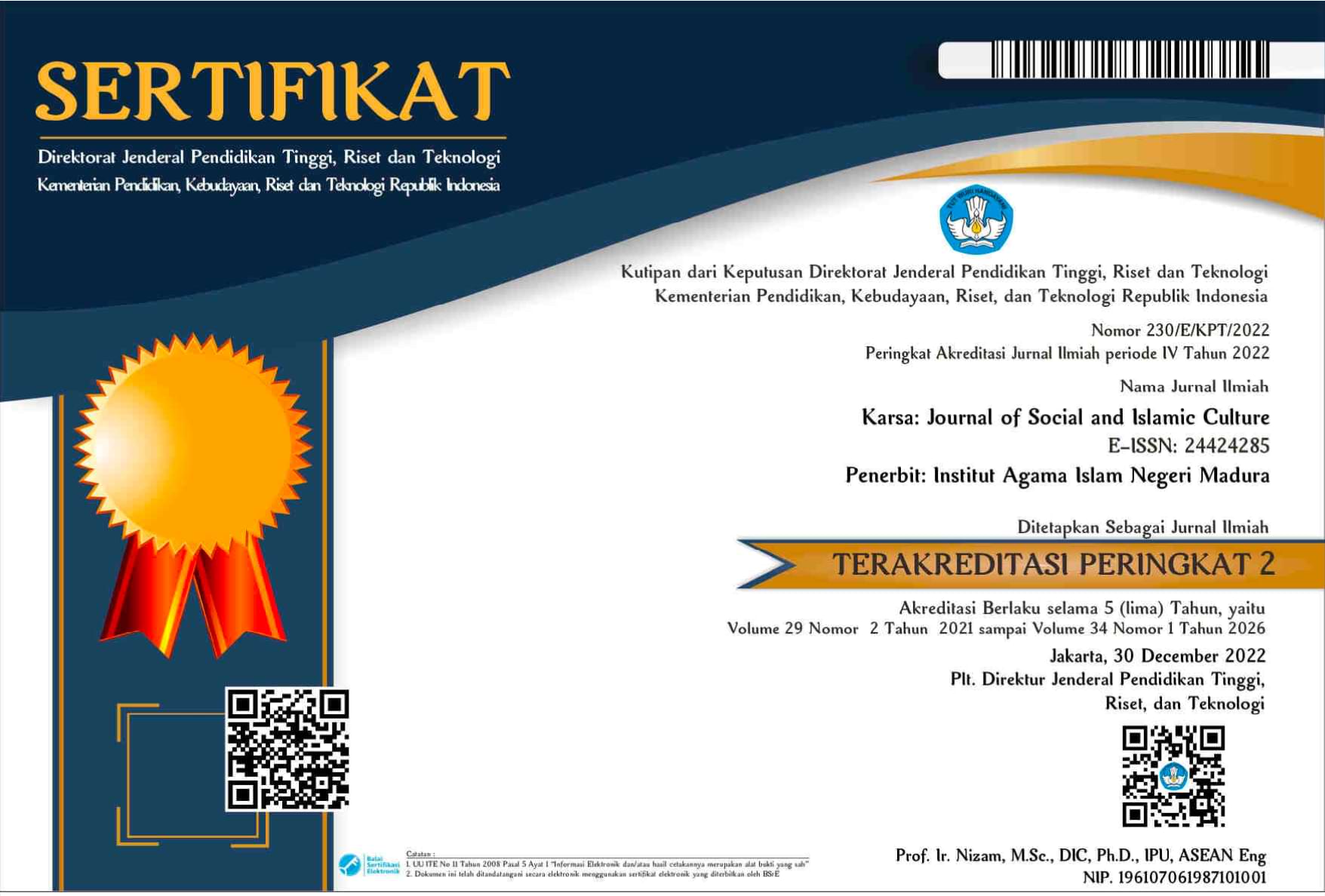Qur’an and Sasak Culture Tafsir on Religious Attitudes in Lombok
 Abstract views: 238
,
Abstract views: 238
,
 PDF downloads: 132
PDF downloads: 132
Abstract
One of the traditions still preserved on the island of Lombok is the tradition of using Berugaq as a place to study or recite the Koran. Berugaq is a place to receive guests, family deliberations, a place for worship, and even a place for learning and discussion to provoke and motivate residents to learn the Quran and Tafsir. Berugaq is an alternative because, in addition to a comfortable position, Berugaq is an alternative. After all, in addition to a comfortable home and being in the open air. Berugak is also made a gathering place that symbolizes kinship. In Berugaq, the Al-Qur’an is submitted as an interpretation of religious attitudes because Berugaq is considered comfortable and can motivate residents to participate in learning the Al-Qur’an and its performance. Explanations of Al-Qur’an verses are primarily done in mosques and schools, never in Berugaq or Langgar, which makes the researcher interested in this study. Teaching methods of interpreting the Al-Qur’an by explaining the content of the verses of the Al-Qur’an with discussion and question and answer. The method used in this research is a qualitative research method descriptive analytical approach by applying a systematic, directed, and accountable way of working. With the learning model in Berugaq, community members are motivated to learn the Al-Qur’an because they consider Berugaq to be a comfortable and attractive place where more and more people, both youth and children who participate in learning the Qur’an so that the traditional learning in Berugaq is a tradition that needs to be developed and preserved.
Downloads
References
Abdillah, Junaidi. “Radikalisme Agama: Dekonstruksi Tafsir Ayat-Ayat Kekerasan dalam Al-Qur’an.” Kalam 8, no.2 (2014): 281-300. http://ejournal.radenintan.ac.id/index.php/KALAM/article/ view/224.
Alpansori, Muhammad Jaelani, and Herman Wijaya. “Nilai-Nilai Pendidikan Karakter dalam Cerita Rakyat Sasak (Pendekatan Pragmatik).” Education: Jurnal Ilmu Kependidikan 9, no. 2 (2014): 308-326. https://e-journal.hamzanwadi.ac.id/index.php/ edc/article/view/72.
Amalia, Annisa Rizky. Tradisi Perkawinan Merariq Suku Sasak Di Lombok: Studi Kasus Integrasi Agama dengan Budaya Masyarakat Tradisional. BS thesis. Jakarta: Fakultas Ushuluddin dan Filsafat UIN Syarif Hidayatullah, 2017.
Asmadi, Juniansah, and Ardi Yuniarman. “Pola Permukiman Tradisional di Wilayah Masyarakat Hukum Adat Wet Semokan Kecamatan Bayan Kabupaten Lombok Utara.” Jurnal Planoearth 3, no.2 (2018): 67-71. https://journal.ummat.ac.id/journals/21/ articles/620/submission/review/620-1276-1-RV.pdf.
Atabik, Ahmad. “The Living Qur’an: Potret Budaya Tahfiz al-Qur’an di Nusantara.” Jurnal Penelitian 8, no.1 (2014): 161-178. https://journal.iainkudus.ac.id/index.php/jurnalPenelitian/article/view/1346
Aziz, Ahmad Amir. “Islam Sasak: Pola Keberagamaan Komunitas Islam Lokal di Lombok.” Millah: Jurnal Studi Agama 3, no.2 (2009): 241-253. https://journal.uii.ac.id/Millah/article/view/ 5230.
Creswell, J.W. Research Design Qualitative, Quantitative, and Mixed Method Approaches. Thousand Oaks, CA: SAGE, 2014.
Diana, Dyah Nur. “Toleransi Dalam Kehidupan Antar Umat Beragama (Studi Komparatif Tafsir An-Nur, Tafsir Al-Azhar dan Tafsir Al-Mishbah).” (2018). https://repository.iiq.ac.id/handle/1234567 89/721.
Dinata, Muhamad Ridho. “Konsep Toleransi Beragama Dalam Tafsir Al-Qur’an Tematik Karya Tim Departemen Agama Republik Indonesia.” ESENSIA: Jurnal Ilmu-Ilmu Ushuluddin 13, no.1 (2012): 85-108. https://ejournal.uin-suka.ac.id/ushuluddin/esen sia/article/view/131-05.
Fibrianti, Baiq Sudiana. “Pasar Seni dan Kerajinan Tradisional di Meninting Kawasan Pantai Senggigi Lombok Harmoni Antara Fasade Bangunan Tradisional Sasak dengan Lingkungan Alam Pantai Sebagai Faktor Penentu Citra Bangunan.” (1999). https://dspace.uii.ac.id/bitstream/handle/123456789/20328/95340125%20Baiq%20Sudiana%20Fibrianti.pdf?sequence=1.
Fitriani, Mohamad Iwan. “Kepemimpinan Kharismatis-Transformatif Tuan Guru Dalam Perubahan Sosial Masyarakat Sasak-Lombok Melalui Pendidikan.” Al-Tahrir: Jurnal Pemikiran Islam 16, no.1 (2016): 175-195. https://jurnal.iainponorogo.ac.id/index.php/ tahrir/article/view/332.
Halim, Abd. “Budaya Perdamaian dalam al-Qur’an.” Jurnal Studi Ilmu-Ilmu al-Qur’an dan Hadis 15, no.1 (2014): 23-38. https://ejournal.uin-suka.ac.id/ushuluddin/alquran/article/down load/1186/1075.
Has, M. Hasdin. “Konstribusi Tafsir Nusantara Untuk Dunia (Analisis Metodologi Tafsir al-Misbah Karya M. Quraish Shihab).” Al-Munzir 9, no.1 (2018): 69-79. https://ejournal.iainkendari.ac.id/ index.php/al-munzir/article/view/778.
Hidayati, Husnul. “Metodologi Tafsir Kontekstual Al-Azhar Karya Buya Hamka.” el-Umdah 1, no.1 (2018). https://journal.uin mataram.ac.id/index.php/el-umdah/article/view/407.
Huda, M. Thorokul, Eka Rizki Amelia, and Hendri Utami.” Ayat-Ayat Toleransi dalam Al-Quran Perspektif Tafsir Al-Misbah dan Tafsir Al-Azhar.” Tribakti: Jurnal Pemikiran Keislaman 30, no.2 (2019): 260-281. https://ejournal.uit-lirboyo.ac.id/index.php/ tribakti/article/download/657/541.
Irawan, Bambang. “Tafsir Ayat-ayat Kasih Sayang dalam Masyarakat Plural.” Jurnal Theologia 23, no.1 (2012): 75-88. https://journal. walisongo.ac.id/index.php/teologia/article/view/1760.
Kanina, Intania and Heru Subiyantoro. “Wujud Kebudayaan dengan Konteks Lingkungan Hidup Masyarakat Lombok dalam Arsitektur.” Border: Jurnal Arsitektur 1, no.2 (2019): 123-132. https://www.semanticscholar.org/paper/WUJUD-KEBUDAYAAN-DENGAN-KONTEKS-LINGKUNGAN-HIDUP-Subiyantoro/faf3e54a1e9b8fd4636ddc85a65410ef779149f5.
Lestari, Lenni. “Mushaf Al-Qur’an Nusantara: Perpaduan Islam dan Budaya Lokal.” Jurnal At-Tibyan: Jurnal Ilmu Alqur'an dan Tafsir 1, no.1, (2017): 173-198. https://journal.iainlangsa.ac.id/ index.php/tibyan/article/view/42.
Muali, Chusnul. “Rasionalitas Konsepsi Budaya Nusantara dalam Menggagas Pendidikan Karakter Bangsa Multikultural.” Jurnal Islam Nusantara 1, no.1 (2017): 105-117. https://jurnalnu.com/ index.php/as/article/view/64.
Mukarim, Faranty. “SLTP Islam Internasional Mataram Penekanan pada Pengolahan Bentuk Arsitektur Tradisional Lombok.” (2007). http://dspace.uii.ac.id/123456789/24881.
Munandar, Aries, Deicy Silvia, and J. Ronny Wenas. “Manfaat Berugak Dalam Siuasi Darurat Bencana Alam Gempabumi di Pulai Lombok-Nusa Tenggara Barat.” Jurnal Dialog dan Penanggulangan Bencana, (2019). https://perpustakaan.bnpb. go.id/jurnal/index.php/JDPB/article/download/138/112/225.
Muqoyyidin, Andik Wahyun. “Kitab kuning dan tradisi riset pesantren di nusantara.” IBDA: Jurnal Kajian Islam dan Budaya 12, no.2, (2014): 119-136. https://ejournal.uinsaizu.ac.id/index.php/ibda/ article/view/441.
Murdi, Lalu. “Sejarah lokal dan pendidikan karakter (Tinjauan dalam kearifan lokal masyarakat Sasak Lombok).” Fajar Historia: Jurnal Ilmu Sejarah dan Pendidikan 1, no.1 (2017): 42-54. https://e-journal.hamzanwadi.ac.id/index.php/fhs/article/view /580.
Pawitro, Udjianto. “Prinsip-Prinsip Kearifan Lokal dan Kemandirian Berhuni pada Arsitektur Rumah Tinggal Suku Sasak di Lombok Barat.” Simposium Nasional RAPI X FT UMS. Surakarta: Universitas Muhammadiyah Surakarta (2011). https://www. academia.edu/3581015/PRINSIP_PRINSIP_KEARIFAN_LOKALDAN_KEMANDIRIAN_BERHUNIPADA_ARSITEKTUR_RUMAH_TINGGAL_SUKU_SASAKDI_LOMBOK_BARA.
Priyanto, Dadang, and Raesul Azhar. “Sistem Informasi Bale Adat dan Berugaq Suku Sasak Lombok Berbasis Konten Bergerak.” Seminar Nasional Informatika dan Aplikasinya (SNIA), Cimahi, 27 September 2017. https://snia.unjani.ac.id/web/index.php/snia/ article/download/66/17/.
Priyanto, Dadang, Raesul Azhar, and Muhamad Nur. “Dynamic Content-Based Bale Adat and Berugaq of Sasak Ethnic Information System.” International Journal of Scientific Research in Computer Science, Engineering and Information Technology 3, no.7 (2018): 123-130. https://ijsrcseit.com/ CSEIT183722.
Pujianto, Franseno, and Yenny Gunawan. “Berugaq sebagai identitas arsitektur desa tanah Petak Daye, Lombok Utara.” Media Matrasain 14, no.1 (2017): 12-22. https://ejournal.unsrat.ac.id/ index.php/jmm/article/view/15442.
Rohmana, Jajang A. “Memahami al-Qur’an dengan Kearifan Lokal: Nuansa Budaya Sunda dalam Tafsir al-Qur’an berbahasa Sunda.” Journal of Qur’an and Hadith Studies 3, no.1 (2014): 79-99. https://journal.uinjkt.ac.id/index.php/journal-of-quran-and-hadith/article/view/1164.
Rusmana, Dadan, and Yayan Rahtikawati. Tafsir Ayat-ayat Sosial Budaya: Tafsir Maudhui terhadap Ayat-Ayat al-Quran yang Berkaitan dengan Budaya, Sejarah, Bahasa dan Sastra. Bandung: Pustaka Setia, 2014.
Saptaningtyas, Rini S. “The Local wisdom of Sasak Traditional Architecture in Lombok Island.” In Sustainable Lombok: The Rich Nature and Rich People in the 21st Century. Mataram: Mataram University Press, 2005.
Shihab, M. Quraish. Tafsir al-Misbah. Jakarta: Lentera Hati, 2002.
Siregar, Septi Mulyanti, and Nadiroh. “Peran Keluarga dalam Menerapkan Nilai Budaya Suku Sasak dalam Memelihara Lingkungan.” Jurnal Green Growth dan Manajemen Lingkungan 2, no. 2 (2016): 20-40. https://journal.unj.ac.id/unj/index.php/jgg/ article/view/3516.
Udin Mansyur, Zaen. “Kearifan Sosial Masyarakat Sasak Melalui Tradisi Melampak di Kecamatan Lingsar Lombok Barat.” Schemata: Jurnal Pasca Sarjana IAIN Mataram 8, no.2 (2018): 183-206. https://journal.uinmataram.ac.id/index.php/schemata/ article/view/1307.
Widianingsih, Ida, Helen Jaqueline McLaren, and Janet McIntyre-Mills. “Decentralization, participatory planning, and the anthropocene in Indonesia, with a case example of the Berugak Dese, Lombok, Indonesia.” Balancing individualism and collectivism: Social and Environmental Justice (2018). https://cdpd.fisip.unpad.ac.id/decentralization-participatory-planning-and-the-anthropocene-in-indonesia-with-a-case-example-of-the-berugak-dese-lombok-indonesia/.
The journal operates an Open Access policy under a Creative Commons Non-Commercial Share-Alike license. Authors who publish with this journal agree to the following terms:
- Authors retain copyright and grant the journal right of first publication with the work simultaneously licensed under a Creative Commons Attribution License that allows others to share the work with an acknowledgement of the work's authorship and initial publication in this journal.
- Authors are able to enter into separate, additional contractual arrangements for the non-exclusive distribution of the journal's published version of the work (e.g., post it to an institutional repository or publish it in a book), with an acknowledgement of its initial publication in this journal.
- Authors are permitted and encouraged to post their work online (e.g., in institutional repositories or on their website) prior to and during the submission process, as it can lead to productive exchanges, as well as earlier and greater citation of published work.





















